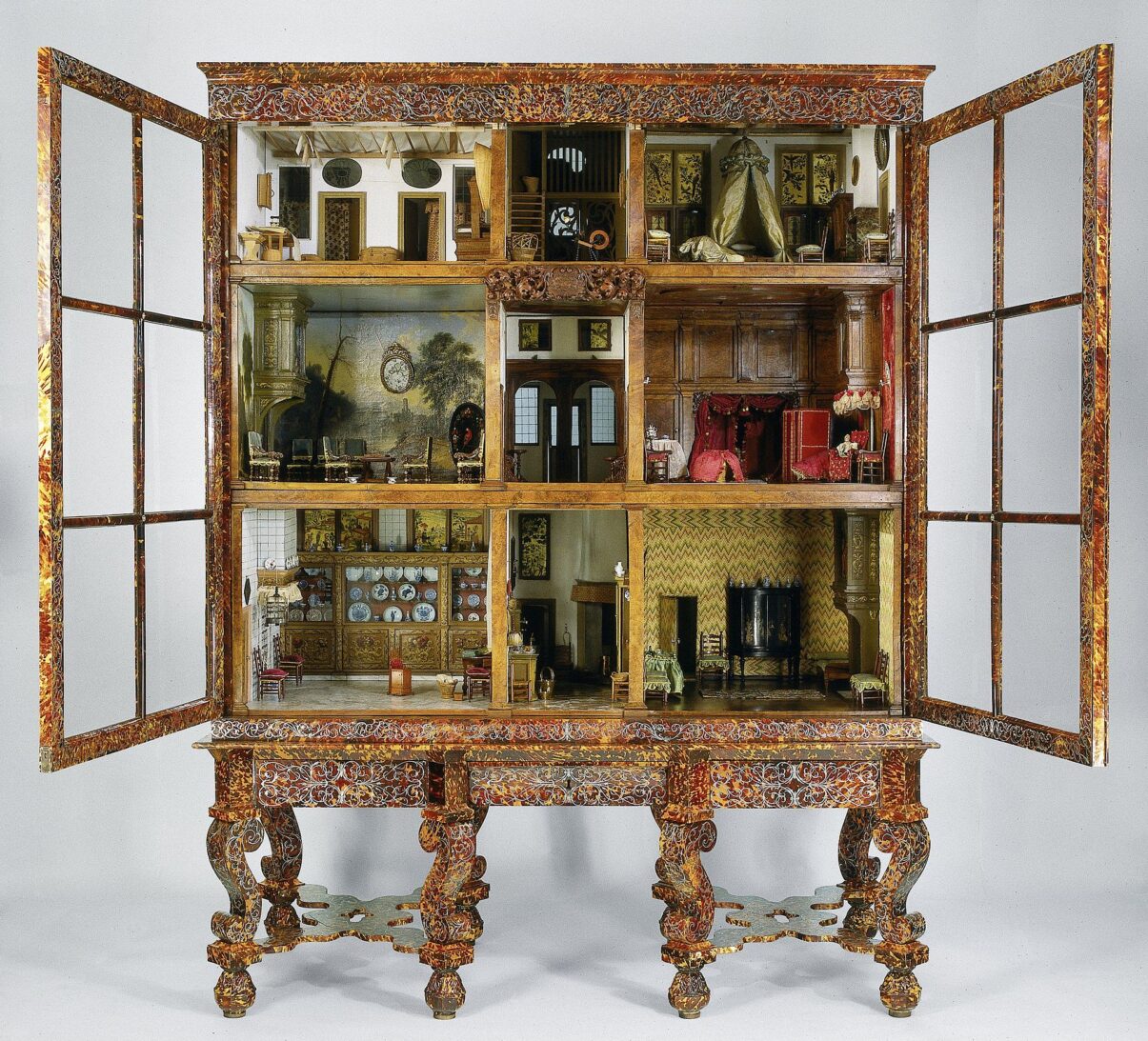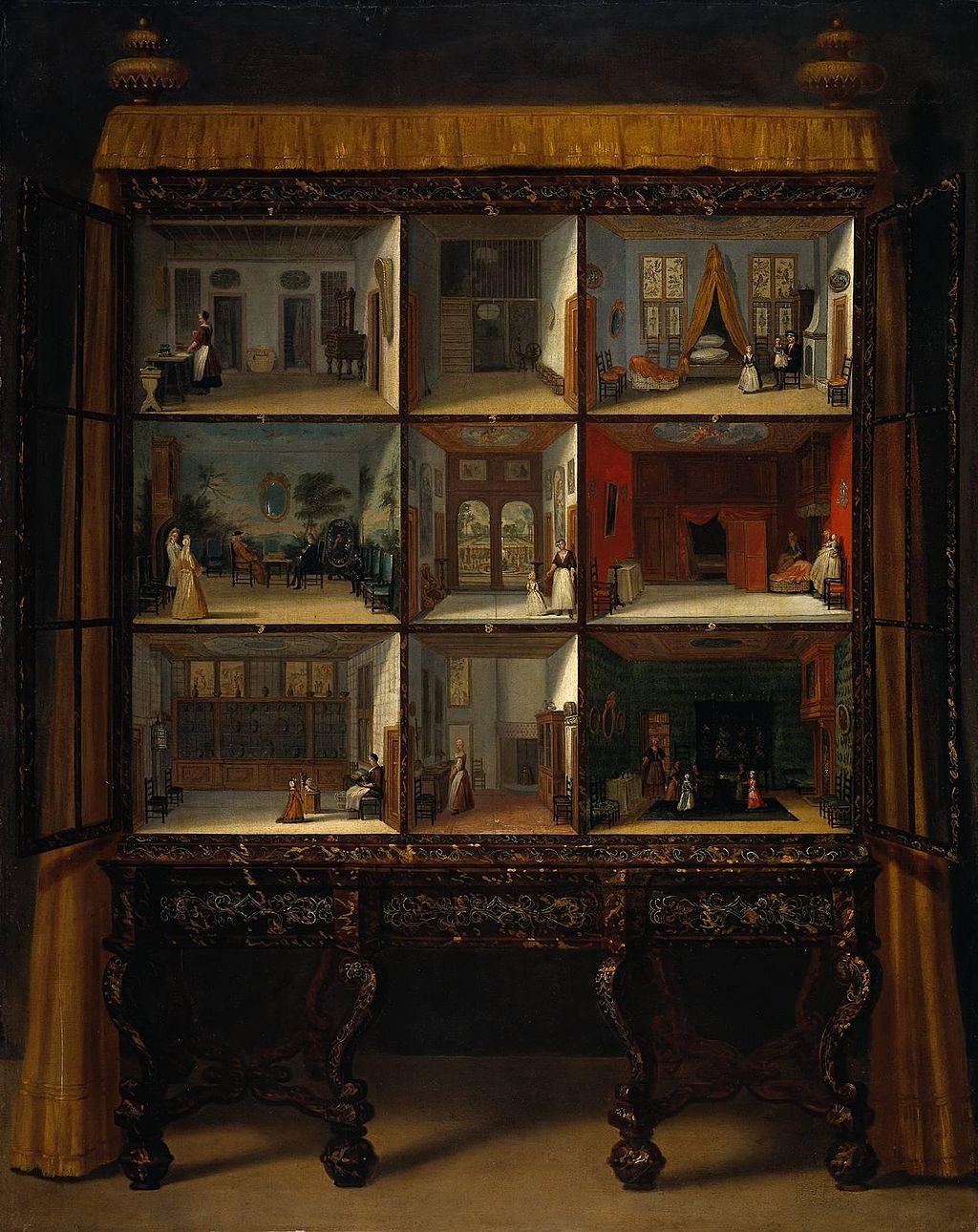
In 1686, 18-year-old Nella Oortman finds herself at her new home in Amsterdam after her marriage to Johannes Brandt, a wealthy merchant. Nella, who yearns for love due to her loneliness, is soon disappointed: trapped and shrunken between Brandt’s indifference and the contemptuous attitude of his dominant sister Nella reaches the ultimate point she can endure. Her husband’s exaggerated wedding gift, the shrunken copy of her new house, seems like a mockery of her weakness, furthermore a cruel joke. However, the tiny creations of the miniaturist, whom she instructed to create a few small items to furnish the house, are not only perfect but are also pieces full of secrets belonging to Nella’s inner world, which is hidden from everyone… The novel, which itself is the narrator of Burton’s talent in portraying the space; treats Amsterdam as an immature empire with decay, a city full of strict Puritans and Calvinist sensibilities, people spying on each other, insecure foreigners from outside, and women hiding their expensive jewelry in the folds of their clothes, an uneasy and cold nevertheless intriguing city.
Jessie Burton invites us to observe the Amsterdam of the 17th century, an ideal world in which a woman can have freedom and control, where she can build her own perfect world, rich in possibilities. The story of Petronella Oortman, who is pulled out of usual life and repetitive lines is narrated in this gothic atmosphere. Her relations with her husband Johannes Brandt, who lent her a helping hand, are as far away from a simple “savior man-woman in need” relationship, because throughout the story, Petronella, who guides the feminist aspect of the book, has to change the balance between the outer world and her inner world. We can see that she has transformed from a naive character into a strong woman who can stand on her own feet by shaping her character for the sake of establishing and protecting her new family.
I found “the Miniaturist” stuck between two books on the shelves of the bookstore. Seeing the poor book (which had already been put in the wrong category) standing alone in the dust like a lonely innocent child on the shelf, I felt this terrible urge to give the book a chance. The book which I read with great pleasure resembled a carob. Carobs are tough, not easy to chew and you can’t taste anything while you bite it. However, within a few minutes after eating one, you will feel an intense, caramel-like taste on your palate. The miniaturist is one of the books that I have read comfortably but enjoyed afterward: the plot is fluid, the element of mystery does not disturb you like the stone in the shoes, it pulls simplicity and banality out of the story, but makes it much more difficult to enter the inner world of the characters. The characters who are alienated from the chaos and lies of daily life are hiding even from the reader, concealing their true selves. This element that made me feel like a stranger entering a house where I don’t belong upset me, but more importantly, it was rather intriguing and made me curious. Now that I have stepped into this unfamiliar world, I couldn’t go back or ignore it, so I started researching the historical aspect of the characters.

Every Women Is The Architect Of Her Own Fortune
Jessie Burton gave only fictional characteristics to her characters who were actually not far from reality, and kept their inner worlds a secret; Therefore, we do not have fictional nor historical information about the characters which were mentioned in the story. However, the real Petronella Oortman left no portrait behind; what is known about her is that she was one of the seven siblings and that her father made money by making weapons. One of the five wonderlands which survived till now is the miniature house of Petronella Oortman which is now being exhibited at the Rijksmuseum in Amsterdam. This house, which was delineated in a lively way by Jacob Appel, is more than a replica of Petronella’s real home.
I Fight To Emerge
Miniature houses were not toys, children were not allowed to play with them or even come close to them. Probably this particular one was opened at parties for guests to admire the craftsmanship, creative vision, and wealth of the owner. Even if women could not equip their real home with all the riches, these miniature ones were kind of a chance given to women to reflect a replica of their dream life as they wish. Houses, which were the pillars of the bridge between private life and life projected outside, were also the key to acceptance into society. Being able to show off wealth was actually the key to social acceptance and class division; for men, this was by collecting books or portraits while for women having miniatures was their way of rising into the Haute society. One of the most common wedding gifts among the wealthy merchant class of that period were miniature houses. This particular house, which is more than two and a half meters high and almost two meters wide, was constructed by a French carpenter using tin-coated tortoise shells instead of wood. Although it is known that some women kept detailed notebooks about the additions, renovations, and expenses they made to their miniature homes, there is no exact information about Petronella Oortman’s house, but this house inherited by her daughter and opened to visitors and according to the diary of one of the visitors, it had cost around 20 to 30 thousand guilders and was completely equal to the cost of a completely furnished channel house.
Things Can Change
Now that I mentioned the heroes and historical facts, it is time for me to explain the part that I enjoy telling the most: the character of the house. Everything, alive or lifeless, has an energy that it gains not by living, but by existing. I’m not talking about that ‘soul’ nonsense that everyone seems so fond of mentioning. Maybe I am not expressing myself clearly enough, but what I mean is probably the version of “auras” which belong not only to human beings but to each “substance” that occupies space. Each house also has its own personality, and since the miniature house was entirely and solely owned by Petronella Oortman, it can give us much more information than any portrait in terms of getting to know Nella.
The entrance hall which is the center of the house acts like a bridge between the perfect life projected outside and the reality is lived. Even in the book, the most dramatic events take place in this “limbo” room. This room is where the wealth is most wanted to be shown, after all, it is the only room that visitors have to pass through. The floor is painted with a series of majestic marble stones which creates a funny contrast with the ceiling which is reminiscent of the sky. The vases and plates in the background are porcelains called “Kangxi” (the trade between China and the Netherlands was largely carried out by the Dutch East India Company (VOC)).
The vast majority of miniatures are silver and this is the key to many pieces of information. There are symbols and embossments on each silver item that indicate the place and date. The silver in Petronella’s house was made by more than twenty-five craftsmen in more than five cities in the Netherlands.
Unlike other miniature houses known to exist at the time, each dollhouse in the Netherlands had a nursery and living room. This was a private room where a mother stayed for six weeks after the birth of a baby, accepting visitors and holding parties. The birth of a healthy child was important and postnatal parties were taken seriously. The inclusion of these living rooms was to reflect the joy of the mother and baby’s safety as well as the healthy attachment between them but Appel’s painting features an extraordinary room; this indicates that Petronella was grieving for her lost baby shortly after her first birth.
Another symbol of wealth was white, clean, and well-ironed laundry; This meant you had a helper you paid to take care of your linens. The room reserved for clean laundry is on the top floor of the house.
Don’t Let Sweet Weapons Stray
Petronella’s house shows that a distinguished woman can find a creative way to act according to the expectations and norms of the period. It is an incredible work that proves that wealth and social status can be demonstrated and reflected with the art movement of the period and that it is possible to create your own inner world.
